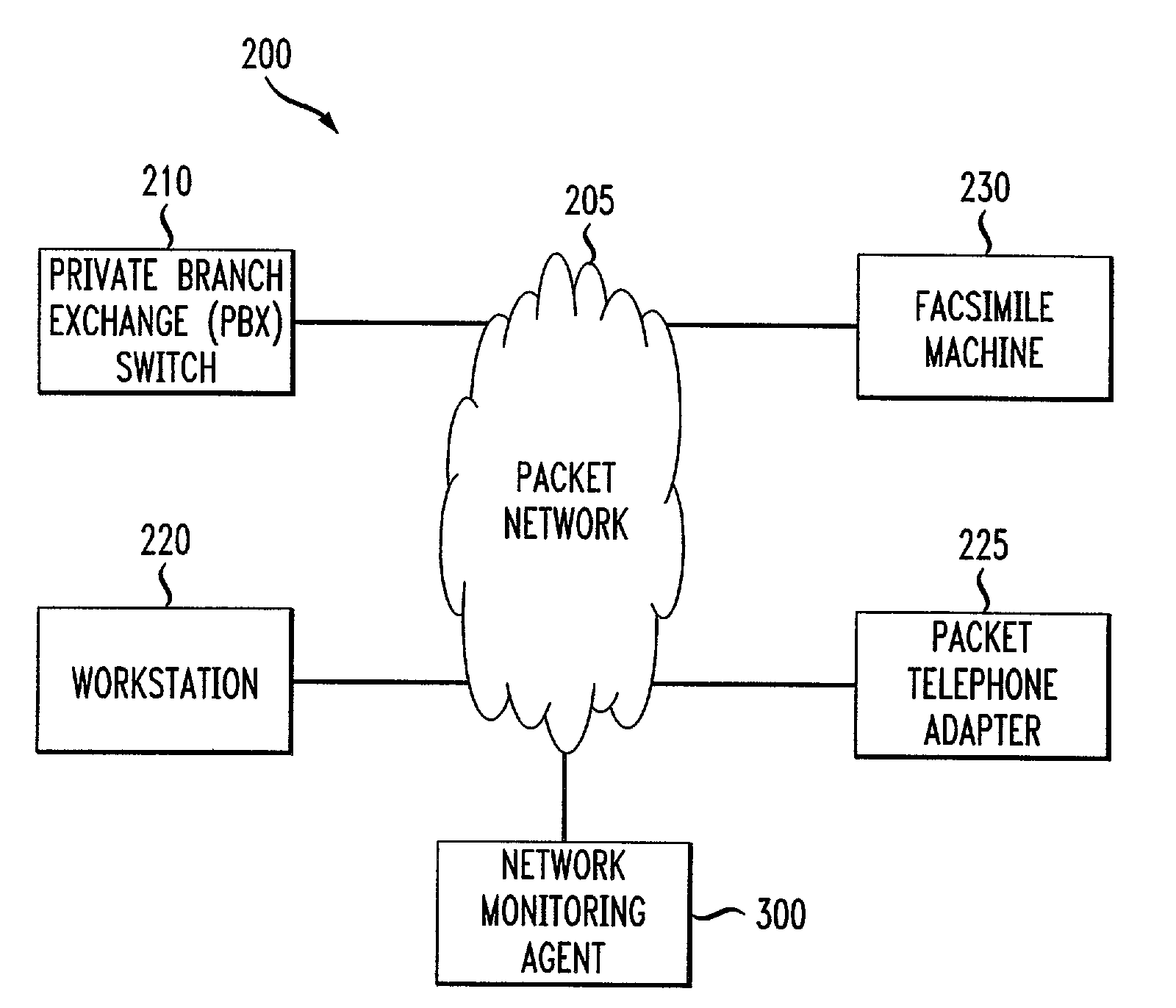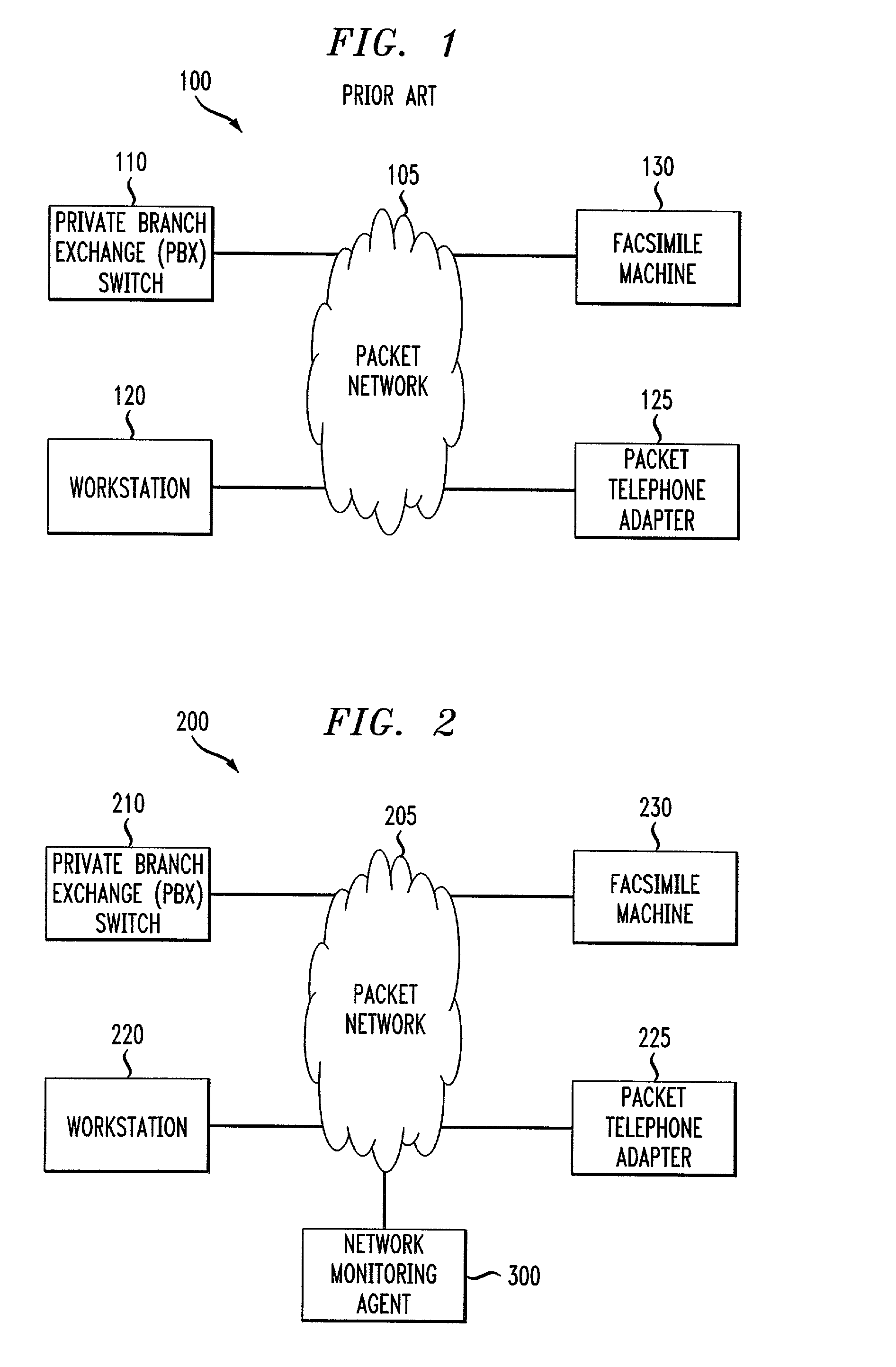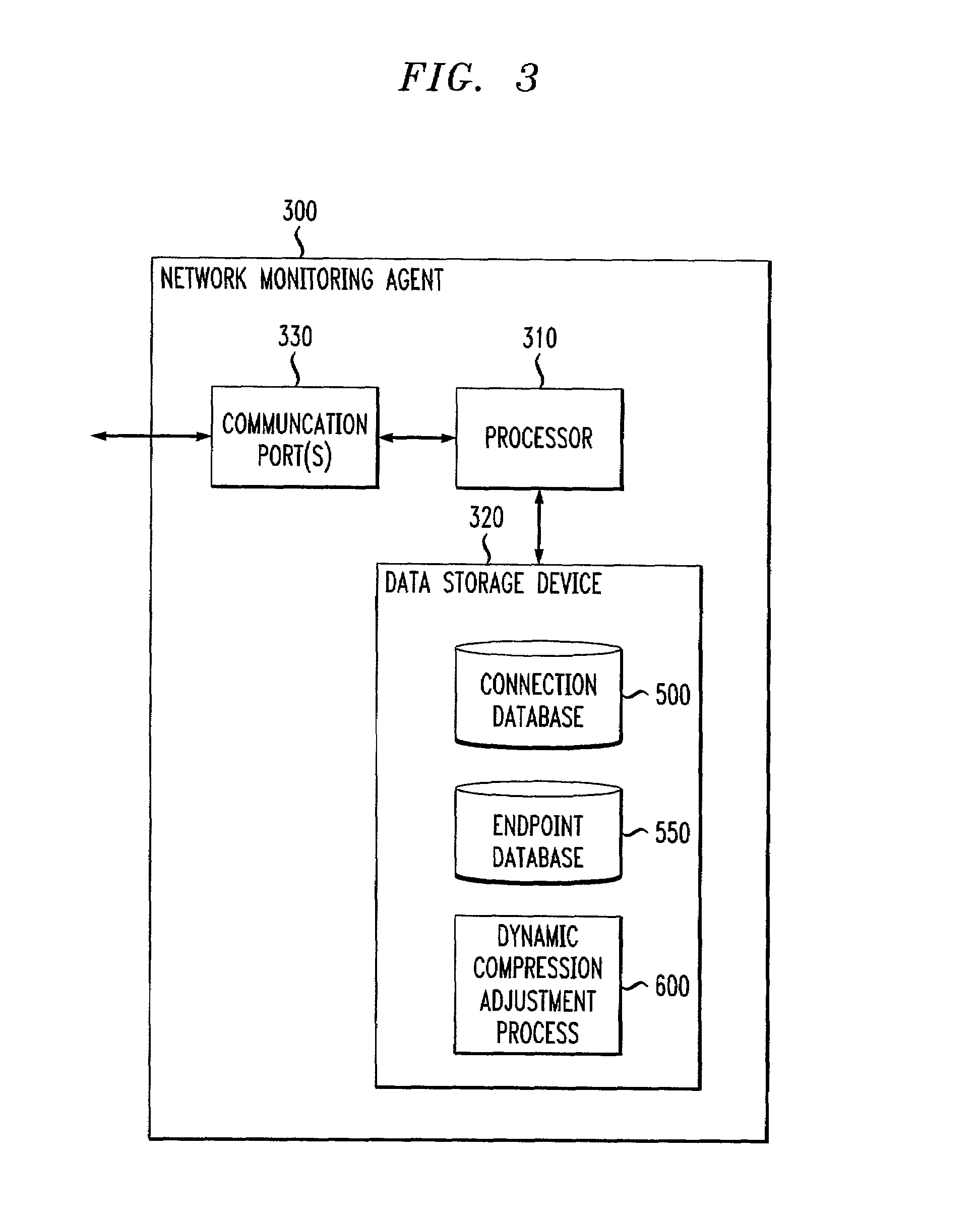Method and apparatus for dynamically allocating bandwidth utilization in a packet telephony system
a packet telephony system and bandwidth utilization technology, applied in data switching networks, time-division multiplexing selection, multiplex communication, etc., can solve the problem that conventional packet telephony systems do not dynamically adjust the codec selection for a given connection based on network conditions, and achieve the effect of maximizing the likelihood of the recipient devi
- Summary
- Abstract
- Description
- Claims
- Application Information
AI Technical Summary
Benefits of technology
Problems solved by technology
Method used
Image
Examples
Embodiment Construction
[0019]FIG. 2 illustrates a multimedia packet telephony system 200 in accordance with the present invention. The, present invention provides a network monitoring agent 300, discussed below in conjunction with FIG. 3, that monitors network conditions, such as traffic volume, and determines when to dynamically adjust the level of compression for one or more connections in order to maximize the total number of possible connections, while maintaining a desired level of quality.
[0020]According to one feature of the present invention, the network monitoring agent 300 selects a compression standard based on current network traffic volume. At times of lighter network traffic, a compression standard that provides a lower degree of compression and a higher quality level is selected. Likewise, as network traffic increases, a compression standard that provides a higher degree of compression, although at a lower quality level, is selected in order to maximize the network utilization. As network b...
PUM
 Login to View More
Login to View More Abstract
Description
Claims
Application Information
 Login to View More
Login to View More - R&D
- Intellectual Property
- Life Sciences
- Materials
- Tech Scout
- Unparalleled Data Quality
- Higher Quality Content
- 60% Fewer Hallucinations
Browse by: Latest US Patents, China's latest patents, Technical Efficacy Thesaurus, Application Domain, Technology Topic, Popular Technical Reports.
© 2025 PatSnap. All rights reserved.Legal|Privacy policy|Modern Slavery Act Transparency Statement|Sitemap|About US| Contact US: help@patsnap.com



